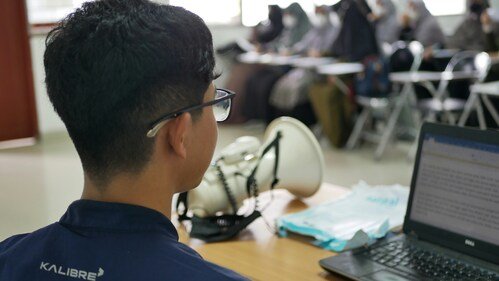As education increasingly moves online, digital examinations have become the norm for many institutions. With this shift comes the critical responsibility of protecting exam integrity in a remote setting.
Fortunately, a range of smart, purpose-built technologies has emerged to help safeguard assessments, reassure educators, and support fair testing for all candidates.
Below, we explore the most effective innovations that are actively reshaping digital exam security today.
Biometric Identity Checks
One of the first steps in any secure examination process is verifying who’s sitting the test. Traditional logins can’t guarantee that the right person is at the keyboard, which is why biometric authentication has become a game-changer. Facial recognition, fingerprint scans, and even keystroke dynamics can confirm a candidate’s identity at login—and in some cases, continuously during the exam.
Facial matching systems, for example, capture a live image of the test-taker and compare it to a stored reference photo. This significantly reduces the risk of impersonation, a common issue in unsupervised environments. Some platforms even detect subtle movements or behavioural patterns to validate the person’s identity throughout the session.
Smarter Remote Proctoring
The rise of AI-driven remote proctoring has brought a new level of vigilance to online assessments. These systems monitor candidates via webcam and microphone, automatically flagging suspicious behaviours such as looking away from the screen too often, someone else entering the room, or unusual background noise
In many systems, the AI handles routine surveillance, and human proctors are alerted only when something needs attention. This blend of automation and human oversight, as seen in platforms such as janison.com, makes it possible to scale exams efficiently while still maintaining a close watch—especially important for large student cohorts or high-stakes testing environments.
Lockdown Browsers and Secure Test Setups
Preventing access to unauthorised materials during an exam is just as important as monitoring behaviour. Lockdown browser technology helps achieve this by restricting what candidates can do on their devices during the test. It blocks new tabs, keyboard shortcuts, copy-paste functions, and access to other apps.
Some solutions go further, disabling screen sharing, detecting virtual machines, and even locking down USB ports. When paired with randomised questions and time limits, these measures significantly reduce the risk of cheating and content leakage.
Cloud Infrastructure and Redundancy
Running online exams at scale demands a robust technical foundation. Cloud-based assessment platforms offer just that—high availability, strong performance, and resilience against system crashes. This is especially important during peak periods when thousands of candidates may be testing simultaneously.
Cloud platforms are typically supported by failover systems, load balancing, and encrypted backups, all of which ensure business continuity. Even if a local disruption occurs, exams can continue with minimal impact, and data remains secure.
Blockchain for Tamper-Proof Records
Blockchain technology is finding a valuable niche in digital assessments by offering tamper-proof records of submissions, scores, and candidate activity. Once an exam result is logged on the blockchain, it cannot be changed—making it a highly reliable system for maintaining academic integrity.
It also supports faster, more trustworthy credentialing. Institutions can issue certificates or digital badges backed by blockchain, which third parties can verify instantly and independently. This is particularly beneficial for graduates applying for jobs or further study where quick validation is crucial.
Real-Time Alerts and Forensic Analytics
Security doesn’t end when the exam does. Advanced analytics now provide post-assessment insights that help institutions identify unusual activity. These tools can detect trends like identical answers between candidates, unusually fast completion times, or frequent changes to answers.
Combined with real-time alerts triggered during the test, these features support early intervention and post-exam investigations. They create a transparent, traceable environment where any suspicious behaviour can be reviewed with confidence and consistency.
Securing the Path Forward in Digital Assessment
The challenge of protecting digital exams has inspired a wave of thoughtful innovation. From verifying identity with biometrics to monitoring behaviour with AI and preserving data integrity through blockchain, the tools now available are powerful, precise, and increasingly essential.



